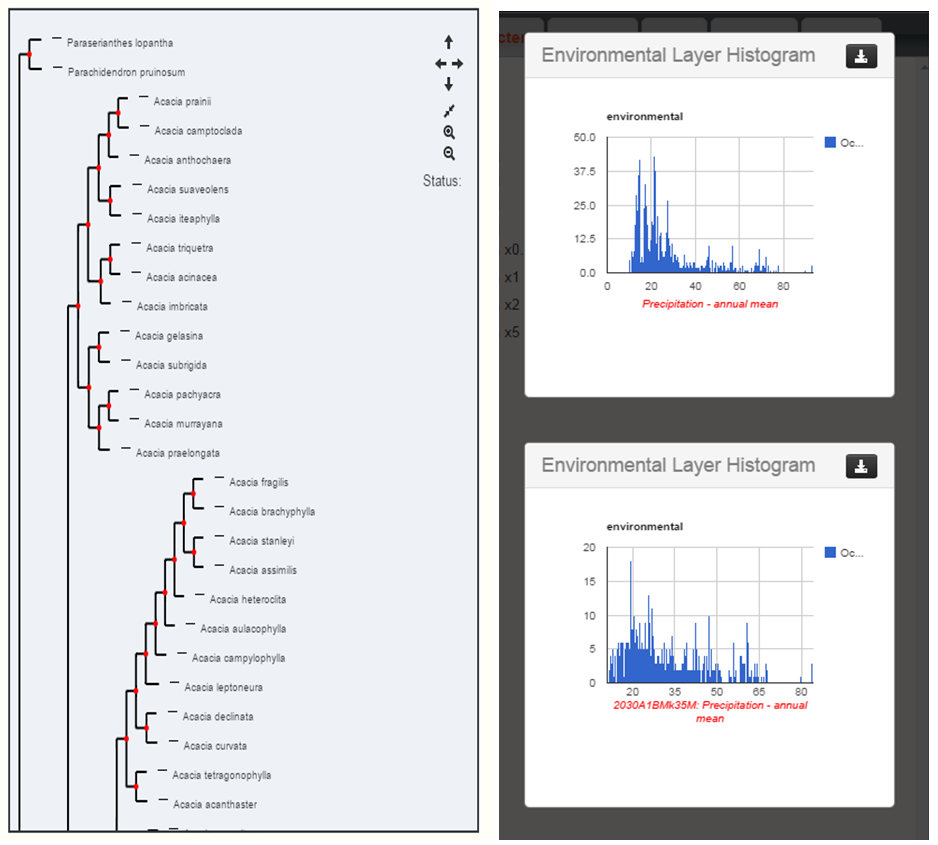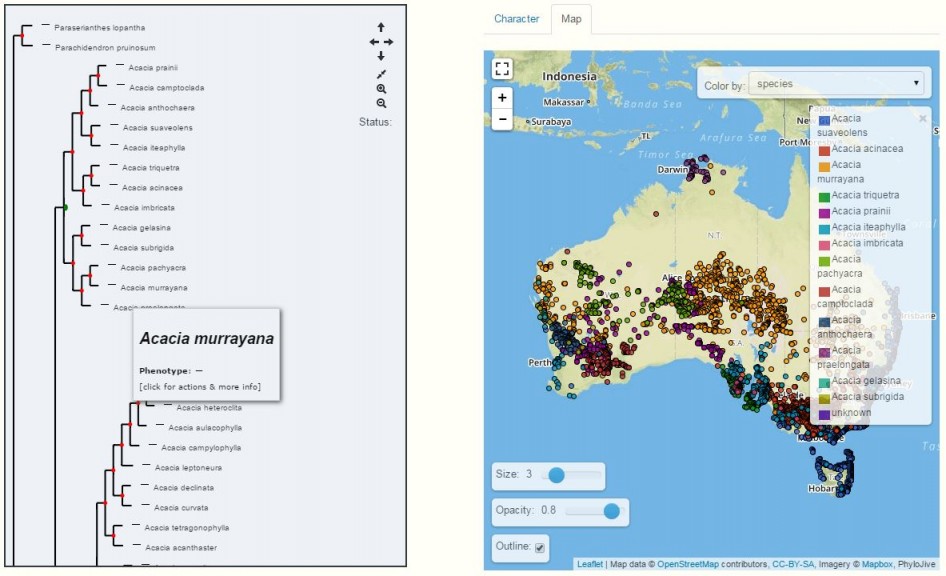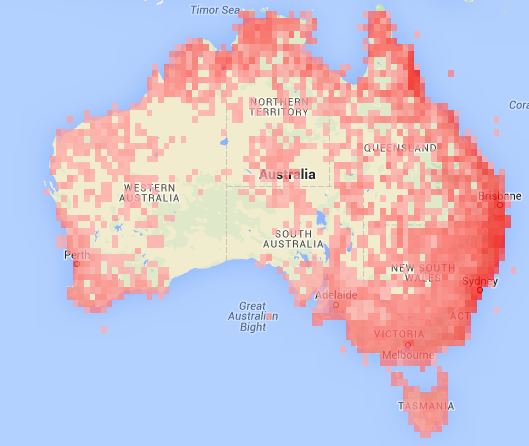The Atlas of Living Australia (ALA), in collaboration with the creators of PhyloJIVE, will soon be introducing new tools to explore species data and relationships from a phylogenetic (or tree of life) perspective. The tools are intended for both novices and experts alike, and aim to make phylogenetic approaches to data exploration and visualisation accessible to a broad range of audiences.

A phylogeny (or a tree of life) is essentially a theory about how organisms are related to one another through evolutionary time. Phylogenies are based on the assumption that more closely related species will be more similar to one another, and they are commonly built using genetic sequences or physical characters. They are often visually represented as trees: the tips of the ever branching tree representing species, and the branches representing ‘evolutionary distance’ (e.g. length of time) from the ancestors from which they evolved.

The new ALA-PhyloJIVE tools intersect species occurrence data with environmental layers and phylogenetic trees, enabling a variety of new perspectives on biodiversity. For example, you will be able to investigate the environmental envelopes occupied by the species of any chosen clade (a group of related organisms sharing a common ancestral node). You can also measure and compare biodiversity for any given area/s in ways that account for both the number of species occurring there, and their evolutionary distinctness from one another, using phylogenetic diversity. The tools will also allow you to map the spatial distribution of characters (e.g. waxy leaves) across the landscape.

Watch this space for notification of the availability of these phylogenetic tools. Your feedback on the tools will be welcome.
For more information, please contact support@ala.org.au.
UPDATE: explore Phylolink here: http://phylolink.ala.org.au/